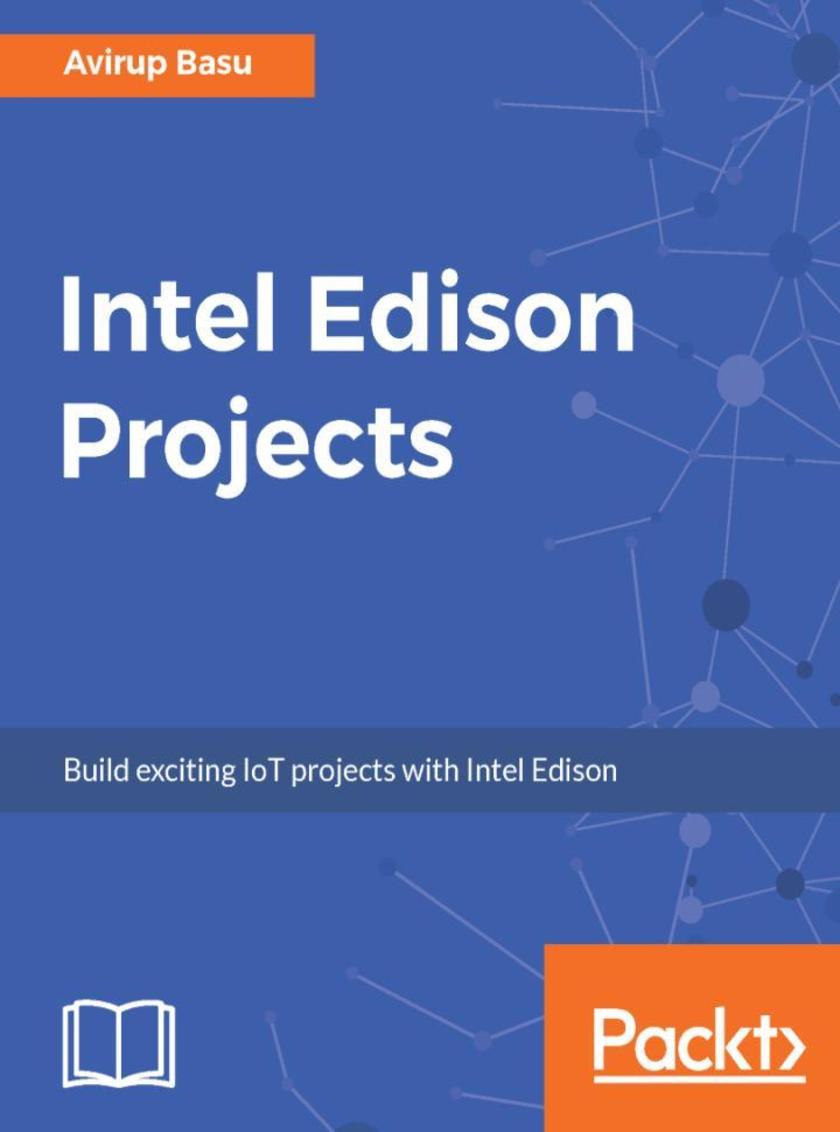
Intel Edison Projects
¥63.21
Build powerful Robots and IoT solutions using Intel Edison About This Book ? Learn to build advanced level robots with Intel Edison and Arduino ? Efficiently build and program home automation and IoT projects with Intel Edison ? Master the skills of creating enticing projects with Intel Edison. Who This Book Is For If you are a hobbyist, robot engineer, IoT enthusiast, programmer, or developer who wants to create autonomous projects with Intel Edison, then this book is for you. Prior programming knowledge would be beneficial. What You Will Learn ? Program your device using the Arduino processor language, Python, and Node.js ? Interface different sensors with the Intel Edison ? Build a home automation system using MQTT, Android, and WPF ? Perform face detection using Intel Edison ? Develop a high-speed line follower robot ? Control a robot using a PC application and an custom controller In Detail Change the way you look at embedded electronics with Intel Edison. It is a small computing platform packed with a set of robust features to deliver hands-on performance, durability, and software support. This book is a perfect place to kickstart development and rapid prototyping using Intel Edison. It will start by introducing readers to the Intel Edison board and explaining how to get started with it. You will learn how to build a mini weather station, which will help you to acquire temperature and smoke level and push it to the IoT platform. Then you will see how to build a home automation device and control your appliances using an Android app. Furthermore, we will build a security system using a webcam to detect faces and perform voice recognition. Toward the end, the book will demonstrate how you can build two robots, which will be based on different line sensing sensors and can be controlled by a PC. The book will guide the readers through each and every step of execution of a project, using Intel Edison. Style and approach A project-based guide that will take the readers through various domains of projects like robotics, IoT and so on.
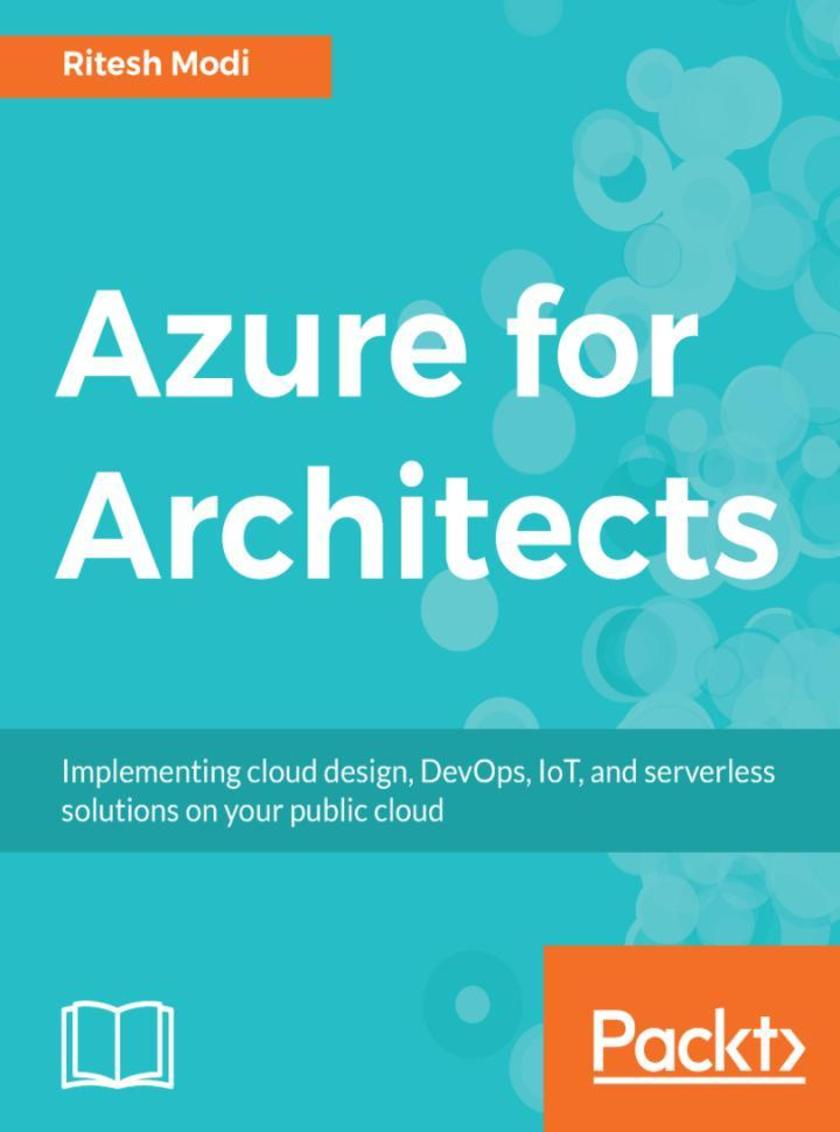
Azure for Architects
¥80.65
Your one stop guide to making the most out of Azure Cloud About This Book ? Get familiar with the different design patterns available in Microsoft Azure ? Develop Azure cloud architecture and a pipeline management system ? Get to know the security best practices for your Azure deployment Who This Book Is For If you are Cloud Architects, DevOps Engineers, or developers who want to learn key architectural aspects of the Azure Cloud platform, then this book is for you. Prior basic knowledge of the Azure Cloud platform is good to have. What You Will Learn ? Familiarize yourself with the components of the Azure Cloud platform ? Understand the cloud design patterns ? Use enterprise security guidelines for your Azure deployment ? Design and implement Serverless solutions ? See Cloud architecture and the deployment pipeline ? Understand cost management for Azure solutions In Detail Over the years, Azure cloud services has grown quickly, and the number of organizations adopting Azure for their cloud services is also gradually increasing. Leading industry giants are finding that Azure fulfills their extensive cloud requirements. This book will guide you through all the important and tough decision-making aspects involved in architecturing a Azure public cloud for your organization. The book starts with an extensive introduction to all the categories of designs available with Azure. These design patterns focus on different aspects of cloud such as high availability, data management, and so on. Gradually, we move on to various aspects such as building your cloud structure and architecture. It will also include a brief de*ion about different types of services provided by Azure, such as Azure functions and Azure Analytics, which can prove beneficial for an organization. This book will cover each and every aspect and function required to develop a Azure cloud based on your organizational requirements. By the end of this book, you will be in a position to develop a full-fledged Azure cloud. Style and approach This hands-on guide to the Azure Cloud platform covers different architectural concepts and implementations necessary for any enterprise scale deployment.
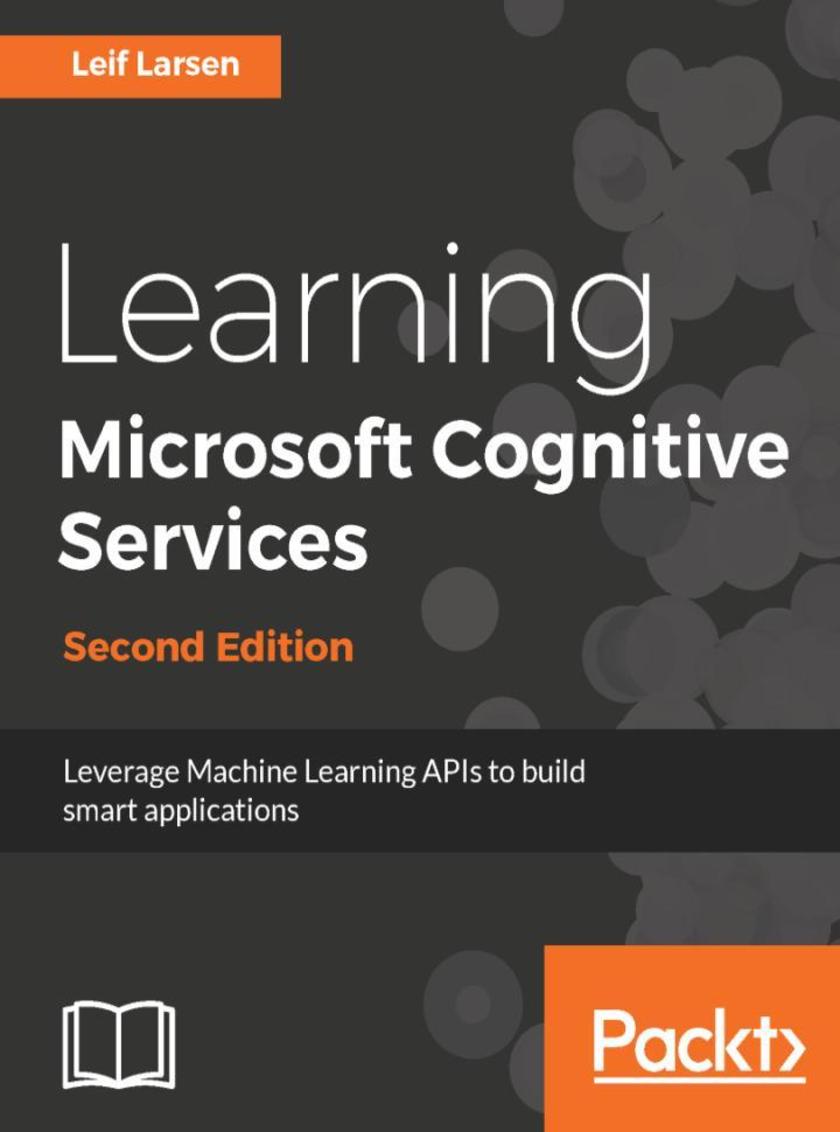
Learning Microsoft Cognitive Services - Second Edition
¥80.65
Learn to build interactive and efficient applications by leveraging 24 effective cognitive services APIs powered by Microsoft About This Book ? Explore the capabilities of 24 of the APIs released as part of the Cognitive Services platform ? Build intelligent apps that combine the power of computer vision, speech recognition, and language processing ? Give your apps human-like cognitive intelligence with this hands-on guide Who This Book Is For .NET developers who want to add AI capabilities to their applications will find this book useful. No knowledge of machine learning or AI is necessary to work through this book. What You Will Learn ? Identify a person through visual inspection and audio ? Reduce user effort by utilizing AI-like capabilities ? Understand how to analyze images and text in different ways ? Find out how to analyze images using Vision APIs ? Add video analysis to applications using Vision APIs ? Utilize Search to find anything you want ? Analyze text to extract information and explore text structure In Detail Microsoft has revamped its Project Oxford to launch the all new Cognitive Services platform-a set of 30 APIs to add speech, vision, language, and knowledge capabilities to apps. This book will introduce you to 24 of the APIs released as part of Cognitive Services platform and show you how to leverage their capabilities. More importantly, you'll see how the power of these APIs can be combined to build real-world apps that have cognitive capabilities. The book is split into three sections: computer vision, speech recognition and language processing, and knowledge and search. You will be taken through the vision APIs at first as this is very visual, and not too complex. The next part revolves around speech and language, which are somewhat connected. The last part is about adding real-world intelligence to apps by connecting them to Knowledge and Search APIs. By the end of this book, you will be in a position to understand what Microsoft Cognitive Service can offer and how to use the different APIs. Style and approach This book takes you through essential API capabilities and shows how to utilize them to suit the needs of your application.
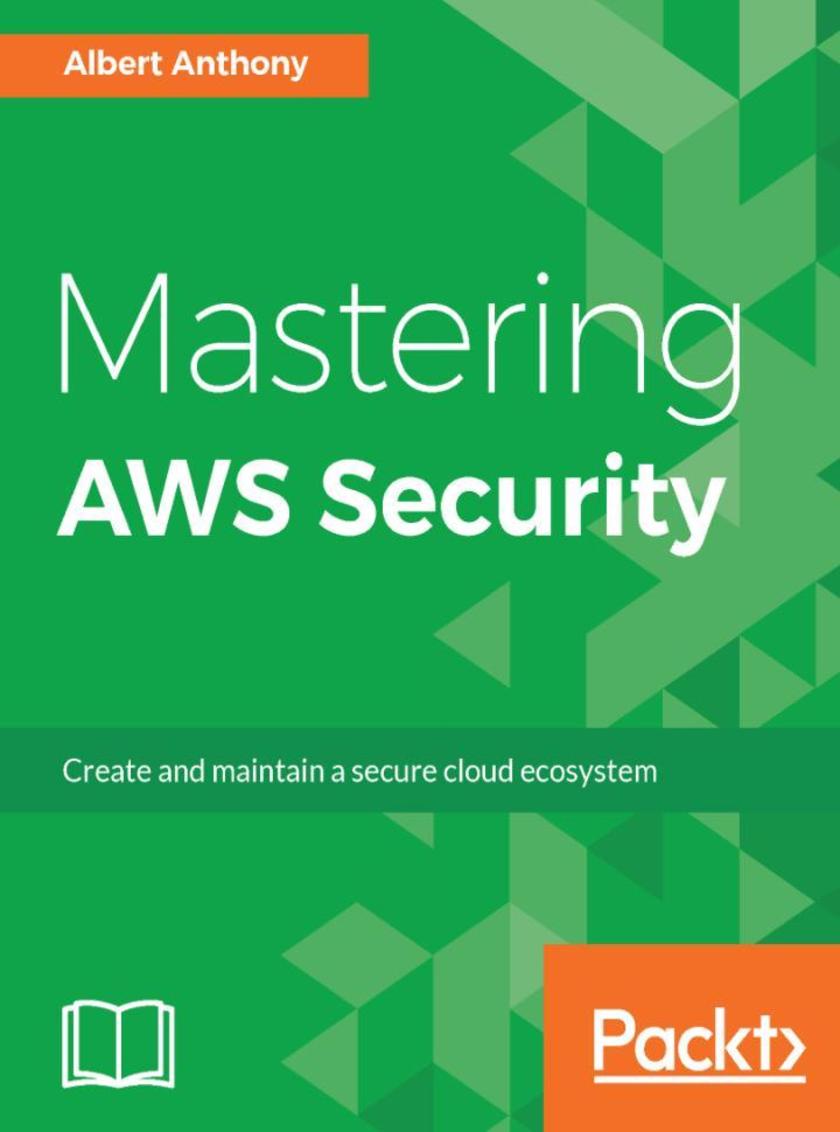
Mastering AWS Security
¥71.93
In depth informative guide to implement and use AWS security services effectively. About This Book ? Learn to secure your network, infrastructure, data and applications in AWS cloud ? Log, monitor and audit your AWS resources for continuous security and continuous compliance in AWS cloud ? Use AWS managed security services to automate security. Focus on increasing your business rather than being diverged onto security risks and issues with AWS security. ? Delve deep into various aspects such as the security model, compliance, access management and much more to build and maintain a secure environment. Who This Book Is For This book is for all IT professionals, system administrators and security analysts, solution architects and Chief Information Security Officers who are responsible for securing workloads in AWS for their organizations. It is helpful for all Solutions Architects who want to design and implement secure architecture on AWS by the following security by design principle. This book is helpful for personnel in Auditors and Project Management role to understand how they can audit AWS workloads and how they can manage security in AWS respectively. If you are learning AWS or championing AWS adoption in your organization, you should read this book to build security in all your workloads. You will benefit from knowing about security footprint of all major AWS services for multiple domains, use cases, and scenarios. What You Will Learn ? Learn about AWS Identity Management and Access control ? Gain knowledge to create and secure your private network in AWS ? Understand and secure your infrastructure in AWS ? Understand monitoring, logging and auditing in AWS ? Ensure Data Security in AWS ? Learn to secure your applications in AWS ? Explore AWS Security best practices In Detail Mastering AWS Security starts with a deep dive into the fundamentals of the shared security responsibility model. This book tells you how you can enable continuous security, continuous auditing, and continuous compliance by automating your security in AWS with the tools, services, and features it provides. Moving on, you will learn about access control in AWS for all resources. You will also learn about the security of your network, servers, data and applications in the AWS cloud using native AWS security services. By the end of this book, you will understand the complete AWS Security landscape, covering all aspects of end - to -end software and hardware security along with logging, auditing, and compliance of your entire IT environment in the AWS cloud. Lastly, the book will wrap up with AWS best practices for security. Style and approach The book will take a practical approach delving into different aspects of AWS security to help you become a master of it. It will focus on using native AWS security features and managed AWS services to help you achieve continuous security and continuous compliance.
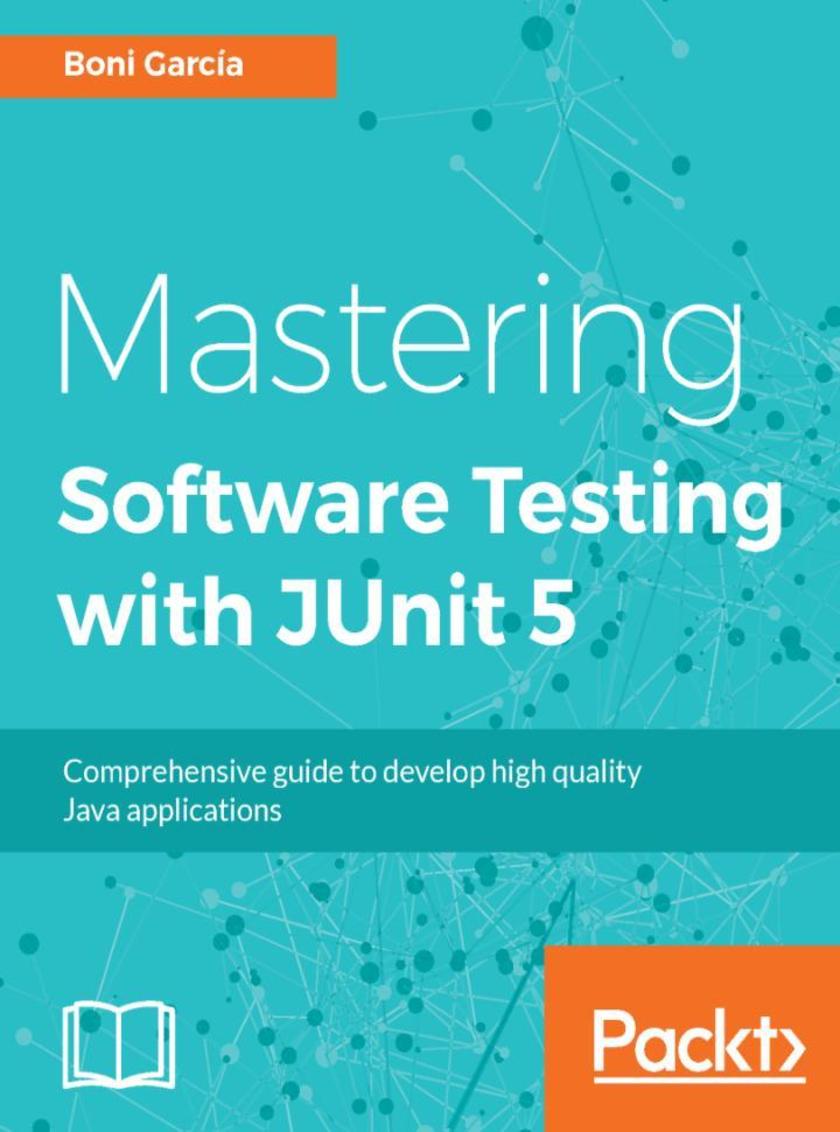
Mastering Software Testing with JUnit 5
¥80.65
A comprehensive, hands-on guide on unit testing framework for Java programming language About This Book ? In-depth coverage of Jupiter, the new programming and extension model provided by JUnit 5 ? Integration of JUnit 5 with other frameworks such as Mockito, Spring, Selenium, Cucumber, and Docker ? Best practices for writing meaningful Jupiter test cases Who This Book Is For This book is for Java software engineers and testers. If you are a Java developer who is keen on improving the quality of your code and building world class applications then this book is for you. Prior experience of the concepts of automated testing will be helpful. What You Will Learn ? The importance of software testing and its impact on software quality ? The options available for testing Java applications ? The architecture, features and extension model of JUnit 5 ? Writing test cases using the Jupiter programming model ? How to use the latest and advanced features of JUnit 5 ? Integrating JUnit 5 with existing third-party frameworks ? Best practices for writing meaningful JUnit 5 test cases ? Managing software testing activities in a living software project In Detail When building an application it is of utmost importance to have clean code, a productive environment and efficient systems in place. Having automated unit testing in place helps developers to achieve these goals. The JUnit testing framework is a popular choice among Java developers and has recently released a major version update with JUnit 5. This book shows you how to make use of the power of JUnit 5 to write better software. The book begins with an introduction to software quality and software testing. After that, you will see an in-depth analysis of all the features of Jupiter, the new programming and extension model provided by JUnit 5. You will learn how to integrate JUnit 5 with other frameworks such as Mockito, Spring, Selenium, Cucumber, and Docker. After the technical features of JUnit 5, the final part of this book will train you for the daily work of a software tester. You will learn best practices for writing meaningful tests. Finally, you will learn how software testing fits into the overall software development process, and sits alongside continuous integration, defect tracking, and test reporting. Style and approach The book offers definitive and comprehensive coverage of all the Unit testing concepts with JUnit and its features using several real world examples so that readers can put their learning to practice almost immediately. This book is structured in three parts: 1. Software testing foundations (software quality and Java testing) 2. JUnit 5 in depth (programming and extension model of JUnit 5) 3. Software testing in practice (how to write and manage JUnit 5 tests)
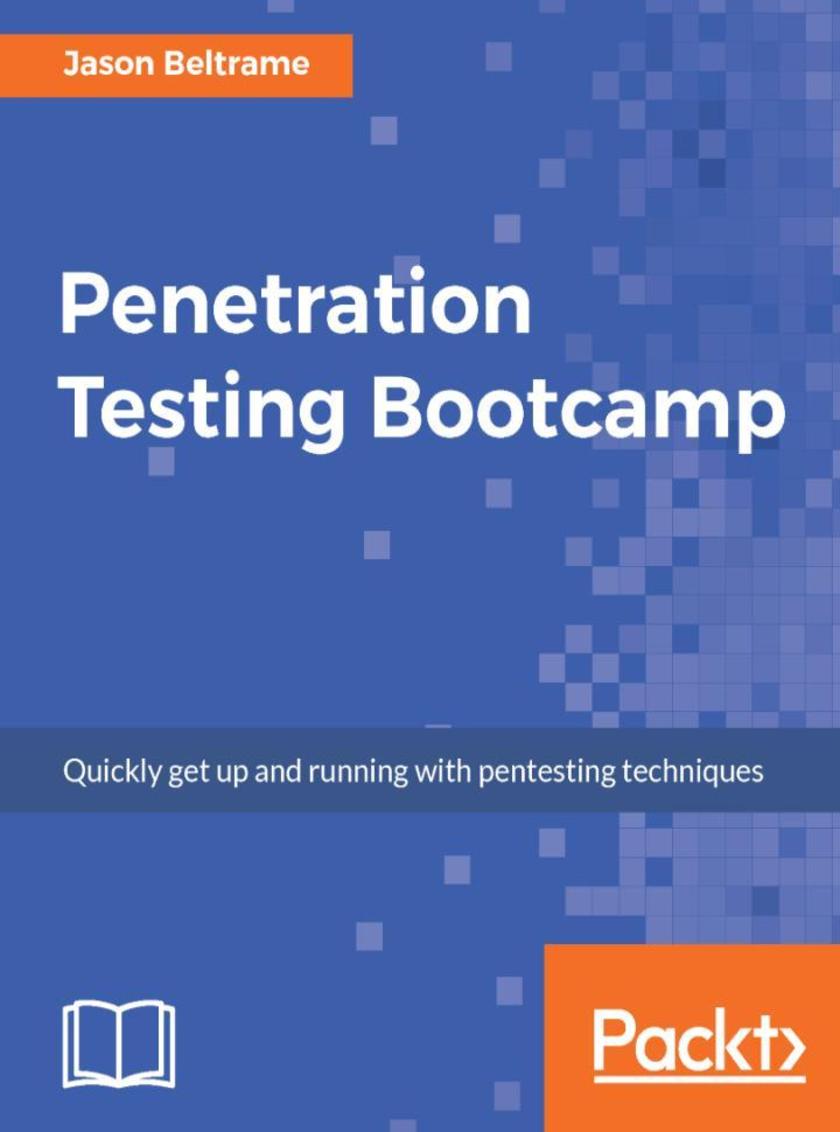
Penetration Testing Bootcamp
¥80.65
Sharpen your pentesting skill in a bootcamp About This Book ? Get practical demonstrations with in-depth explanations of complex security-related problems ? Familiarize yourself with the most common web vulnerabilities ? Get step-by-step guidance on managing testing results and reporting Who This Book Is For This book is for IT security enthusiasts and administrators who want to understand penetration testing quickly. What You Will Learn ? Perform different attacks such as MiTM, and bypassing SSL encryption ? Crack passwords and wireless network keys with brute-forcing and wordlists ? Test web applications for vulnerabilities ? Use the Metasploit Framework to launch exploits and write your own Metasploit modules ? Recover lost files, investigate successful hacks, and discover hidden data ? Write organized and effective penetration testing reports In Detail Penetration Testing Bootcamp delivers practical, learning modules in manageable chunks. Each chapter is delivered in a day, and each day builds your competency in Penetration Testing. This book will begin by taking you through the basics and show you how to set up and maintain the C&C Server. You will also understand how to scan for vulnerabilities and Metasploit, learn how to setup connectivity to a C&C server and maintain that connectivity for your intelligence gathering as well as offsite processing. Using TCPDump filters, you will gain understanding of the sniffing and spoofing traffic. This book will also teach you the importance of clearing up the tracks you leave behind after the penetration test and will show you how to build a report from all the data obtained from the penetration test. In totality, this book will equip you with instructions through rigorous tasks, practical callouts, and assignments to reinforce your understanding of penetration testing. Style and approach This book is delivered in the form of a 10-day boot camp style book. The day-by-day approach will help you get to know everything about penetration testing, from the use of network reconnaissance tools, to the writing of custom zero-day buffer overflow exploits.
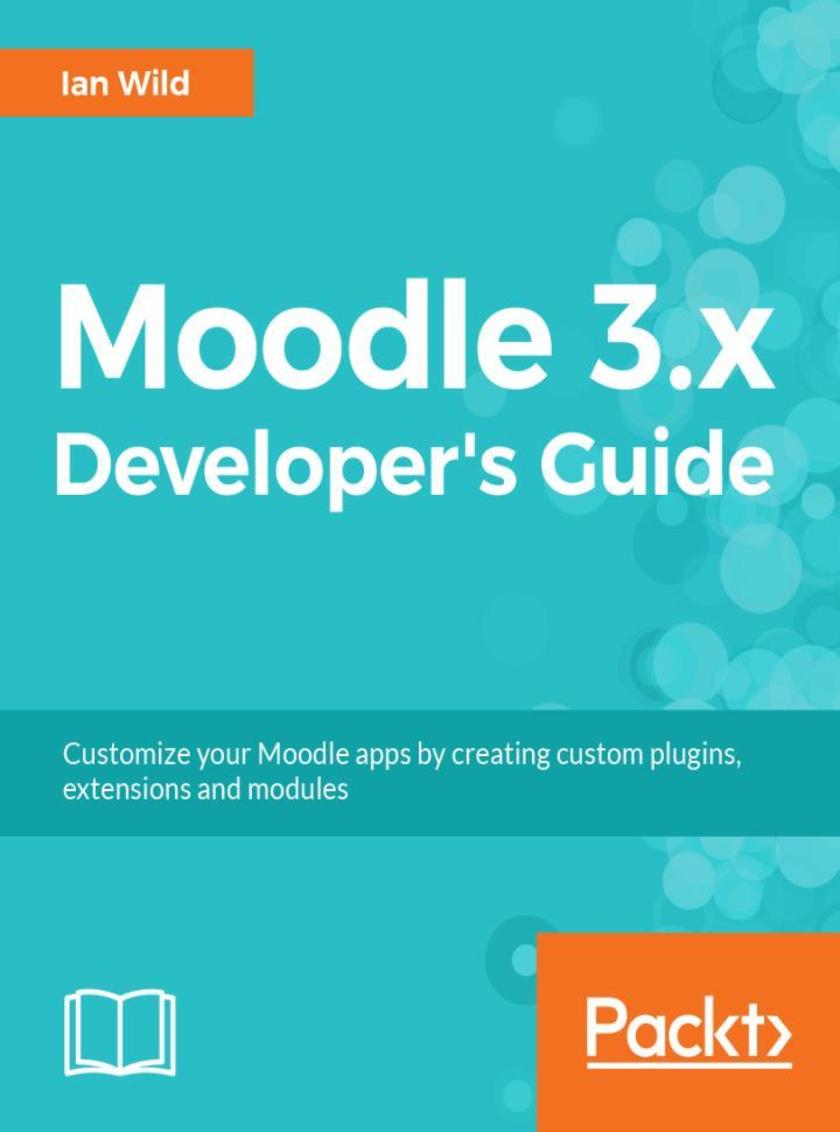
Moodle 3.x Developer's Guide
¥80.65
Effortlessly ensure your application's code quality from day 1 About This Book ? Customize your Moodle 3.x app. ? Leverage the new features of Moodle 3.x by diving deep into the Moodle development eco-system. ? Cater to heavy user traffic, customize learning requirements and create custom third party plugins. Who This Book Is For This book is for Moodle developers who are familiar with the basic Moodle functionality and have an understanding of the types of scenarios in which the Moodle platform can be usefully employed. You must have medium-level PHP programming knowledge. You should be familiar with HTML and XML protocols. You do not need to have prior knowledge of Moodle-specific terminology What You Will Learn ? Work with the different types of custom modules that can be written for Moodle 3.x ? Understand how to author custom modules so they conform to the agreed Moodle 3.x development guidelines ? Get familiar with the Moodle 3.x architecture—its internal and external APIs ? Customize Moodle 3.x so it can integrate seamlessly with third-party applications of any kind ? Build a new course format to specify the layout of a course ? Implement third-party graphics libraries in your plugins ? Build plugins that can be themed easily ? Provide custom APIs that will provide the means to automate Moodle 3 in real time In Detail The new and revamped Moodle is the top choice for developers to create cutting edge e-learning apps that cater to different user’s segments and are visually appealing as well. This book explains how the Moodle 3.x platform provides a framework that allows developers to create a customized e-learning solution. It begins with an exploration of the different types of plugin.. We then continue with an investigation of creating new courses. You will create a custom plugin that pulls in resources from a third-party repository. Then you’ll learn how users can be assigned to courses and granted the necessary permissions. Furthermore, you will develop a custom user home. At the end of the book, we’ll discuss the Web Services API to fully automate Moodle 3.x in real time. Style and approach This book takes a step-by-step practical approach with every step explained in great detail using practical examples. You will create custom plugins from scratch with the examples shown and create new modules as well as extensions with the examples presented.
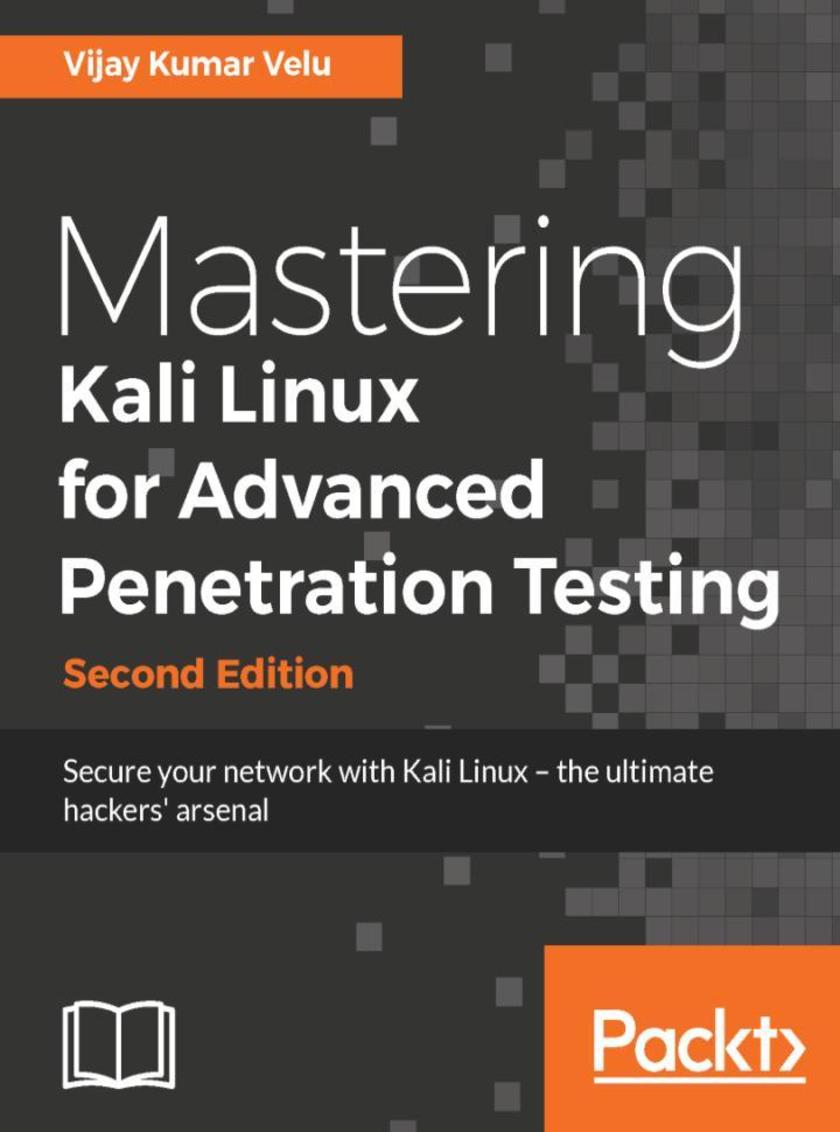
Mastering Kali Linux for Advanced Penetration Testing - Second Edition
¥90.46
A practical guide to testing your network’s security with Kali Linux, the preferred choice of penetration testers and hackers. About This Book ? Employ advanced pentesting techniques with Kali Linux to build highly-secured systems ? Get to grips with various stealth techniques to remain undetected and defeat the latest defenses and follow proven approaches ? Select and configure the most effective tools from Kali Linux to test network security and prepare your business against malicious threats and save costs Who This Book Is For Penetration Testers, IT professional or a security consultant who wants to maximize the success of your network testing using some of the advanced features of Kali Linux, then this book is for you.Some prior exposure to basics of penetration testing/ethical hacking would be helpful in making the most out of this title. What You Will Learn ? Select and configure the most effective tools from Kali Linux to test network security ? Employ stealth to avoid detection in the network being tested ? Recognize when stealth attacks are being used against your network ? Exploit networks and data systems using wired and wireless networks as well as web services ? Identify and download valuable data from target systems ? Maintain access to compromised systems ? Use social engineering to compromise the weakest part of the network—the end users In Detail This book will take you, as a tester or security practitioner through the journey of reconnaissance, vulnerability assessment, exploitation, and post-exploitation activities used by penetration testers and hackers. We will start off by using a laboratory environment to validate tools and techniques, and using an application that supports a collaborative approach to penetration testing. Further we will get acquainted with passive reconnaissance with open source intelligence and active reconnaissance of the external and internal networks. We will also focus on how to select, use, customize, and interpret the results from a variety of different vulnerability scanners. Specific routes to the target will also be examined, including bypassing physical security and exfiltration of data using different techniques. You will also get to grips with concepts such as social engineering, attacking wireless networks, exploitation of web applications and remote access connections. Later you will learn the practical aspects of attacking user client systems by backdooring executable files. You will focus on the most vulnerable part of the network—directly and bypassing the controls, attacking the end user and maintaining persistence access through social media. You will also explore approaches to carrying out advanced penetration testing in tightly secured environments, and the book's hands-on approach will help you understand everything you need to know during a Red teaming exercise or penetration testing Style and approach An advanced level tutorial that follows a practical approach and proven methods to maintain top notch security of your networks.
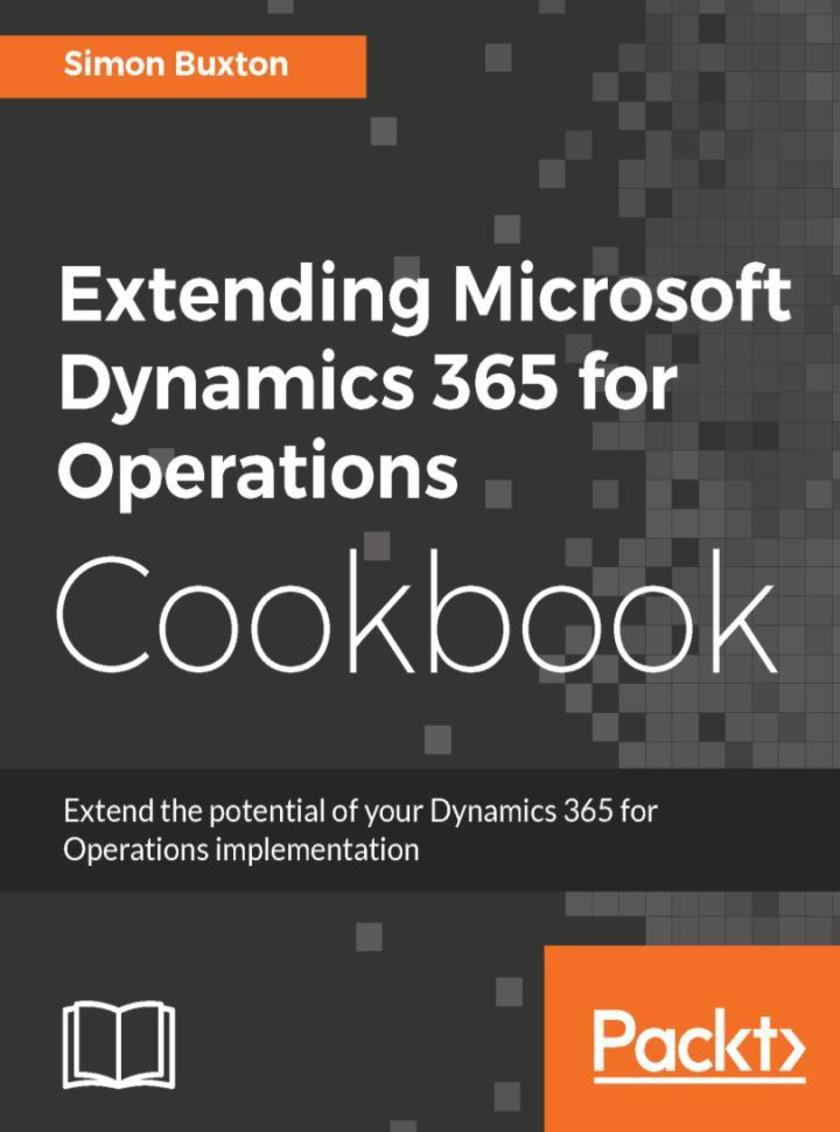
Extending Microsoft Dynamics 365 for Operations Cookbook
¥99.18
Have the best tools at your fingertips to extend and maximize the efficiency of your business management About This Book ? Follow practical and easy-to-grasp examples, illustrations and coding to make the most out of Dynamics 365 for Operations in your business scenario ? Extend Dynamics 365 for Operations in a cost-effective manner by using tools you already have ? Solve common business problems with the valuable features of Dynamics 365 for Operations Who This Book Is For This book is for those who are getting to grips with Dynamics 365 for Operations developers or those migrating from C# development. The guide includes information essential for new and experienced Dynamics 365 for Operations developers. What You Will Learn ? Create enumerated and extended data types ? Understand the importance of using patterns and frameworks while creating a unique concept for your solution ? Service and deploy your code and packages to improve performance ? Write and perform unit tests to automate the testing process ? Design your security model and policies to provide code access privileges ? Construct the UI and business logic to add Power BI to dashboards In Detail Dynamics 365 for Operations is the ERP element of Microsoft’s new Dynamics 365 Enterprise Edition. Operations delivers the infrastructure to allow businesses to achieve growth and make better decisions using scalable and contemporary ERP system tools. This book provides a collection of “recipes” to instruct you on how to create—and extend—a real-world solution using Operations. All key aspects of the new release are covered, and insights into the development language, structure, and tools are discussed in detail. New concepts and patterns that are pivotal to elegant solution designs are introduced and explained, and readers will learn how to extend various aspects of the system to enhance both the usability and capabilities of Operations. Together, this gives the reader important context regarding the new concepts and the confidence to reuse in their own solution designs. This “cookbook” provides the ingredients and methods needed to maximize the efficiency of your business management using the latest in ERP software—Dynamics 365 for Operations. Style and approach The book takes a practical recipe-based approach, focusing on real-world scenarios and giving you all the information you need to build a strong Dynamics 365 for Operations implementation.
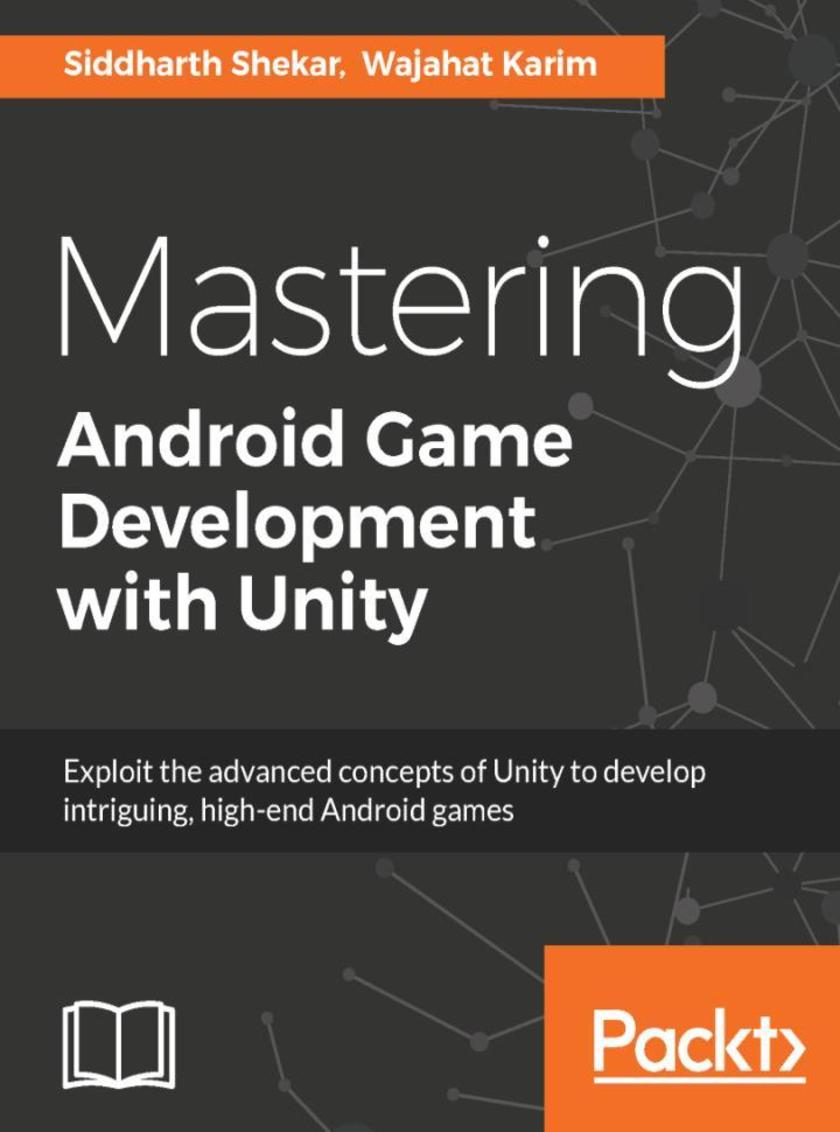
Mastering Android Game Development with Unity
¥67.57
Create enthralling Android games with Unity Faster Than Ever Before About This Book ? Develop complex Android games with the help of Unity's advanced features such as artificial intelligence, high-end physics, and GUI transformations. ? Create amazing Graphical User Interfaces (GUIs) with Unity's new uGUI system ? Unravel and deploy exciting games across Android devices Who This Book Is For If you are a Unity 5 developer and want to expand your knowledge of Unity 5 to create high-end complex Android games, then this book is for you. Readers are expected to have a basic understanding of Unity 5, working with its environment, and its basic concepts. What You Will Learn ? Develop your own Jetpack Joyride clone game ? Explore the advanced features of Unity 5 by building your own Action Fighting game ? Develop remarkable Graphical User Interfaces (GUIs) with Unity's new uGUI system ? Enhance your game by adding stunning particle systems and complex animations ? Build pleasing virtual worlds with special effects, lights, sky cube maps, and cameras ? Make your game more realistic by providing music and sound effects ? Debug and deploy your games on different Android devices In Detail Game engines such as Unity are the power-tools behind the games we know and love. Unity is one of the most widely-used and best loved packages for game development and is used by everyone, from hobbyists to large studios, to create games and interactive experiences for the Web, desktop, mobile, and console. With Unity's intuitive, easy-to-learn toolset and this book, it's never been easier to become a game developer. You will begin with the basic concepts of Android game development, a brief history of Android games, the building blocks of Android games in Unity 5, and the basic flow of games. You will configure an empty project for the Jetpack Joyride Clone Game, add an environment and characters, and control them. Next you will walk through topics such as particle systems, camera management, prefabs, animations, triggers, colliders, and basic GUI systems. You will then cover the basic setup for 3D action fighting games, importing models, textures and controlling them with a virtual on-screen joystick. Later you will set up Scene for 3D Configuration, create basic gameplays, and manage input controls. Next you will learn to create the interface for the main menu, gameplay, game over, achievements, and high score screens. Finally you will polish your game with stats, sounds, and Social Networking, followed by testing the game on Android devices and then publishing it on Google Play, Amazon, and OUYA Stores. Style and approach A step-by-step and detailed guide to developing high-end complex Android games utilizing the advanced concepts of Unity.
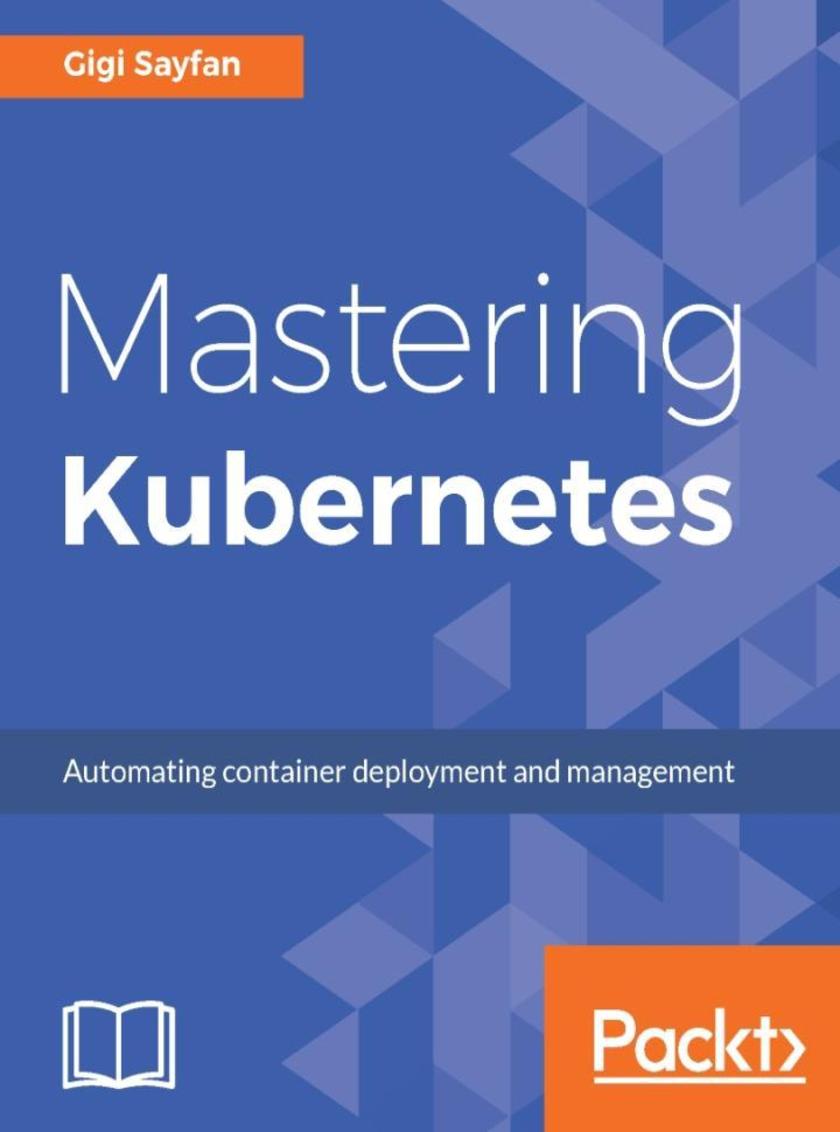
Mastering Kubernetes
¥90.46
Master the art of container management utilizing the power of Kubernetes. About This Book ? This practical guide demystifies Kubernetes and ensures that your clusters are always available, scalable, and up to date ? Discover new features such as autoscaling, rolling updates, resource quotas, and cluster size ? Master the skills of designing and deploying large clusters on various cloud platforms Who This Book Is For The book is for system administrators and developers who have intermediate level of knowledge with Kubernetes and are now waiting to master its advanced features. You should also have basic networking knowledge. This advanced-level book provides a pathway to master Kubernetes. What You Will Learn ? Architect a robust Kubernetes cluster for long-time operation ? Discover the advantages of running Kubernetes on GCE, AWS, Azure, and bare metal ? See the identity model of Kubernetes and options for cluster federation ? Monitor and troubleshoot Kubernetes clusters and run a highly available Kubernetes ? Create and configure custom Kubernetes resources and use third-party resources in your automation workflows ? Discover the art of running complex stateful applications in your container environment ? Deliver applications as standard packages In Detail Kubernetes is an open source system to automate the deployment, scaling, and management of containerized applications. If you are running more than just a few containers or want automated management of your containers, you need Kubernetes. This book mainly focuses on the advanced management of Kubernetes clusters. It covers problems that arise when you start using container orchestration in production. We start by giving you an overview of the guiding principles in Kubernetes design and show you the best practises in the fields of security, high availability, and cluster federation. You will discover how to run complex stateful microservices on Kubernetes including advanced features as horizontal pod autoscaling, rolling updates, resource quotas, and persistent storage back ends. Using real-world use cases, we explain the options for network configuration and provides guidelines on how to set up, operate, and troubleshoot various Kubernetes networking plugins. Finally, we cover custom resource development and utilization in automation and maintenance workflows. By the end of this book, you’ll know everything you need to know to go from intermediate to advanced level. Style and approach Delving into the design of the Kubernetes platform, the reader will be exposed to the advanced features and best practices of Kubernetes. This book will be an advanced level book which will provide a pathway to master Kubernetes
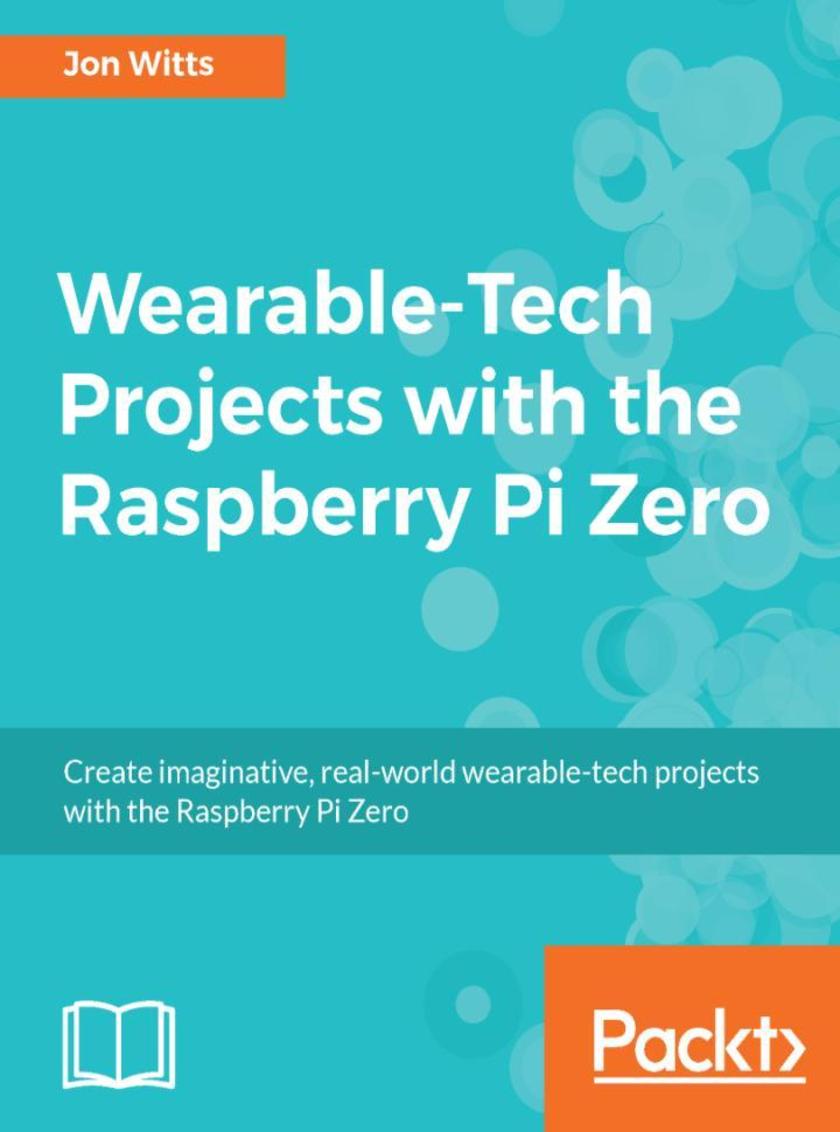
Wearable-Tech Projects with the Raspberry Pi Zero
¥54.49
Leverage the cheapest and smallest computer to build exciting wearable-tech projects. About This Book ? A practical and imaginative guide that exposes you to amazing wearable-tech projects ? Create our own heart-rate monitor device and cool projects such as a Tweet-activated LED T-shirt ? A practical guide packed with real-world, useful wearable-tech projects Who This Book Is For Everyone. While some prior knowledge of Python programming and use of the terminal on the Raspberry Pi would be advantageous, they are by no means necessary. Each chapter clearly sets the steps to be taken on your wearable-tech adventure. The first chapter assumes no prior knowledge to get your Pi Zero and you, up and running. The complexity of the electronic devices used, progress incrementally as you work through the chapters; there are clear steps to follow and pictures to help you at every turn along the way. What You Will Learn ? Make use of your Raspberry Pi Zero to create wearable-tech projects ? Interface with electronic devices and use Python to control them; incorporate these into real-world, practical, wearable-tech projects ? Add LED devices to clothing and connect them to your Pi Zero ? Change how LEDs react based upon your movement or messages sent through Twitter ? Create a pedometer and heart rate monitor ? Create your own GPS tracker In Detail With Wearable-Tech Projects with the Raspberry Pi Zero, you will begin with learning how to install the required software for your upcoming projects. You will also learn how to control electronic devices with the GPIOZero Python library. Next, you will be creating some stylish wearable-tech projects such as a motion-reactive LED cap and a Tweet-activated LED T-shirt. Toward the end of the book, you will be creating some useful health and fitness wearable-tech projects; these will help you monitor your heart rate, track your movements with GPS, and count your footsteps with your own pedometer. By the end of the book, you will have created a range of wearable-tech projects and learned enough about your Raspberry Pi Zero that you should be able to adapt these projects further or come up with your own creations! Style and approach This book showcases interesting and cool projects that use the Raspberry Pi Zero in wearable-tech. This book is for readers who are looking to progress to the next level of integrating hardware into their projects. Upon completion of each project, you will have a functional device that can be worn either to enhance your style or to provide you with practical data.
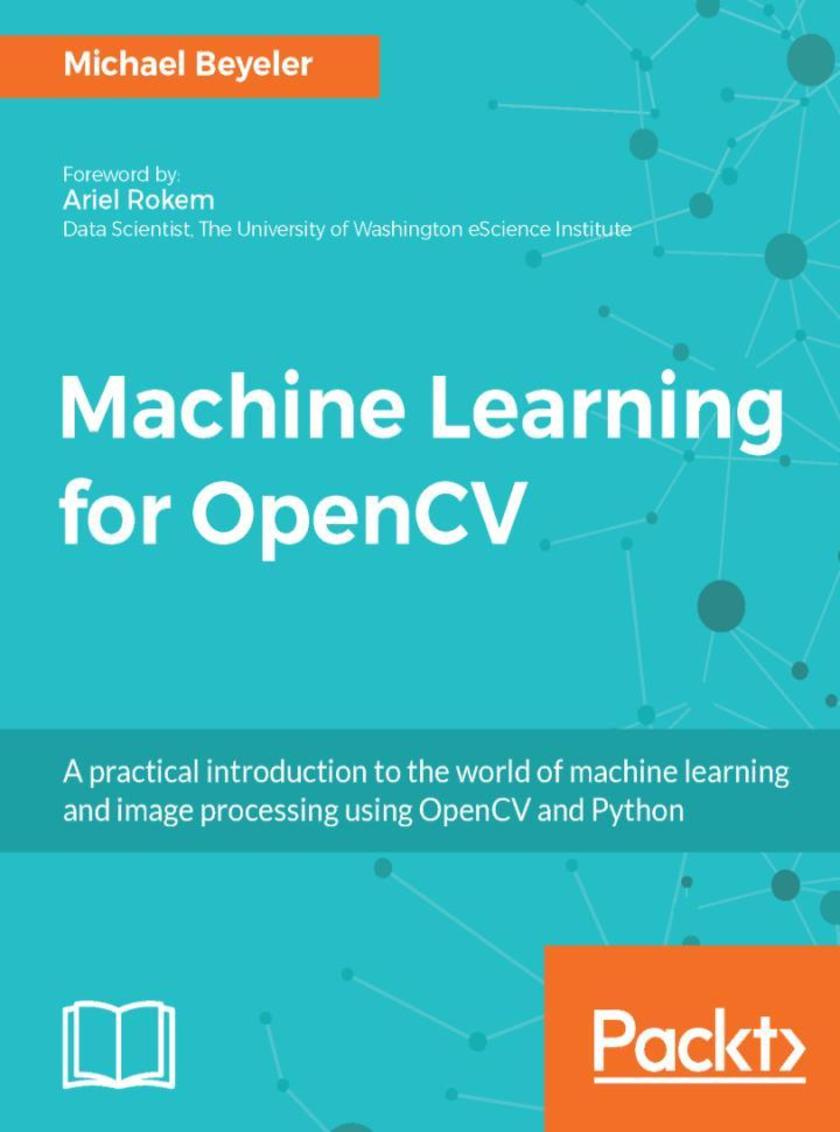
Machine Learning for OpenCV
¥90.46
Expand your OpenCV knowledge and master key concepts of machine learning using this practical, hands-on guide. About This Book ? Load, store, edit, and visualize data using OpenCV and Python ? Grasp the fundamental concepts of classification, regression, and clustering ? Understand, perform, and experiment with machine learning techniques using this easy-to-follow guide ? Evaluate, compare, and choose the right algorithm for any task Who This Book Is For This book targets Python programmers who are already familiar with OpenCV; this book will give you the tools and understanding required to build your own machine learning systems, tailored to practical real-world tasks. What You Will Learn ? Explore and make effective use of OpenCV's machine learning module ? Learn deep learning for computer vision with Python ? Master linear regression and regularization techniques ? Classify objects such as flower species, handwritten digits, and pedestrians ? Explore the effective use of support vector machines, boosted decision trees, and random forests ? Get acquainted with neural networks and Deep Learning to address real-world problems ? Discover hidden structures in your data using k-means clustering ? Get to grips with data pre-processing and feature engineering In Detail Machine learning is no longer just a buzzword, it is all around us: from protecting your email, to automatically tagging friends in pictures, to predicting what movies you like. Computer vision is one of today's most exciting application fields of machine learning, with Deep Learning driving innovative systems such as self-driving cars and Google’s DeepMind. OpenCV lies at the intersection of these topics, providing a comprehensive open-source library for classic as well as state-of-the-art computer vision and machine learning algorithms. In combination with Python Anaconda, you will have access to all the open-source computing libraries you could possibly ask for. Machine learning for OpenCV begins by introducing you to the essential concepts of statistical learning, such as classification and regression. Once all the basics are covered, you will start exploring various algorithms such as decision trees, support vector machines, and Bayesian networks, and learn how to combine them with other OpenCV functionality. As the book progresses, so will your machine learning skills, until you are ready to take on today's hottest topic in the field: Deep Learning. By the end of this book, you will be ready to take on your own machine learning problems, either by building on the existing source code or developing your own algorithm from scratch! Style and approach OpenCV machine learning connects the fundamental theoretical principles behind machine learning to their practical applications in a way that focuses on asking and answering the right questions. This book walks you through the key elements of OpenCV and its powerful machine learning classes, while demonstrating how to get to grips with a range of models.
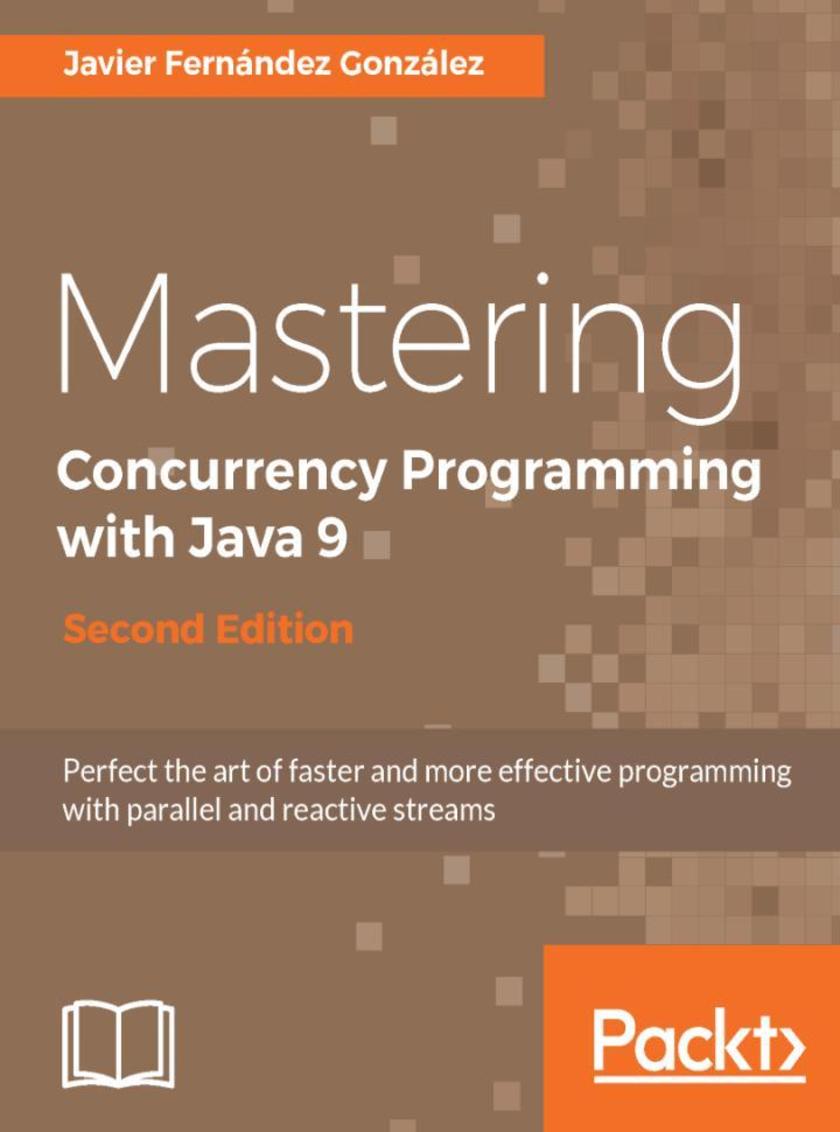
Mastering Concurrency Programming with Java 9 - Second Edition
¥90.46
Master the principles to make applications robust, scalable and responsive About This Book ? Implement concurrent applications using the Java 9 Concurrency API and its new components ? Improve the performance of your applications and process more data at the same time, taking advantage of all of your resources ? Construct real-world examples related to machine learning, data mining, natural language processing, and more Who This Book Is For This book is for competent Java developers who have basic understanding of concurrency, but knowledge of effective implementation of concurrent programs or usage of streams for making processes more efficient is not required What You Will Learn ? Master the principles that every concurrent application must follow ? See how to parallelize a sequential algorithm to obtain better performance without data inconsistencies and deadlocks ? Get the most from the Java Concurrency API components ? Separate the thread management from the rest of the application with the Executor component ? Execute phased-based tasks in an efficient way with the Phaser components ? Solve problems using a parallelized version of the divide and conquer paradigm with the Fork / Join framework ? Find out how to use parallel Streams and Reactive Streams ? Implement the “map and reduce” and “map and collect” programming models ? Control the concurrent data structures and synchronization mechanisms provided by the Java Concurrency API ? Implement efficient solutions for some actual problems such as data mining, machine learning, and more In Detail Concurrency programming allows several large tasks to be divided into smaller sub-tasks, which are further processed as individual tasks that run in parallel. Java 9 includes a comprehensive API with lots of ready-to-use components for easily implementing powerful concurrency applications, but with high flexibility so you can adapt these components to your needs. The book starts with a full de*ion of the design principles of concurrent applications and explains how to parallelize a sequential algorithm. You will then be introduced to Threads and Runnables, which are an integral part of Java 9's concurrency API. You will see how to use all the components of the Java concurrency API, from the basics to the most advanced techniques, and will implement them in powerful real-world concurrency applications. The book ends with a detailed de*ion of the tools and techniques you can use to test a concurrent Java application, along with a brief insight into other concurrency mechanisms in JVM. Style and approach This is a complete guide that implements real-world examples of algorithms related to machine learning, data mining, and natural language processing in client/server environments. All the examples are explained using a step-by-step approach.
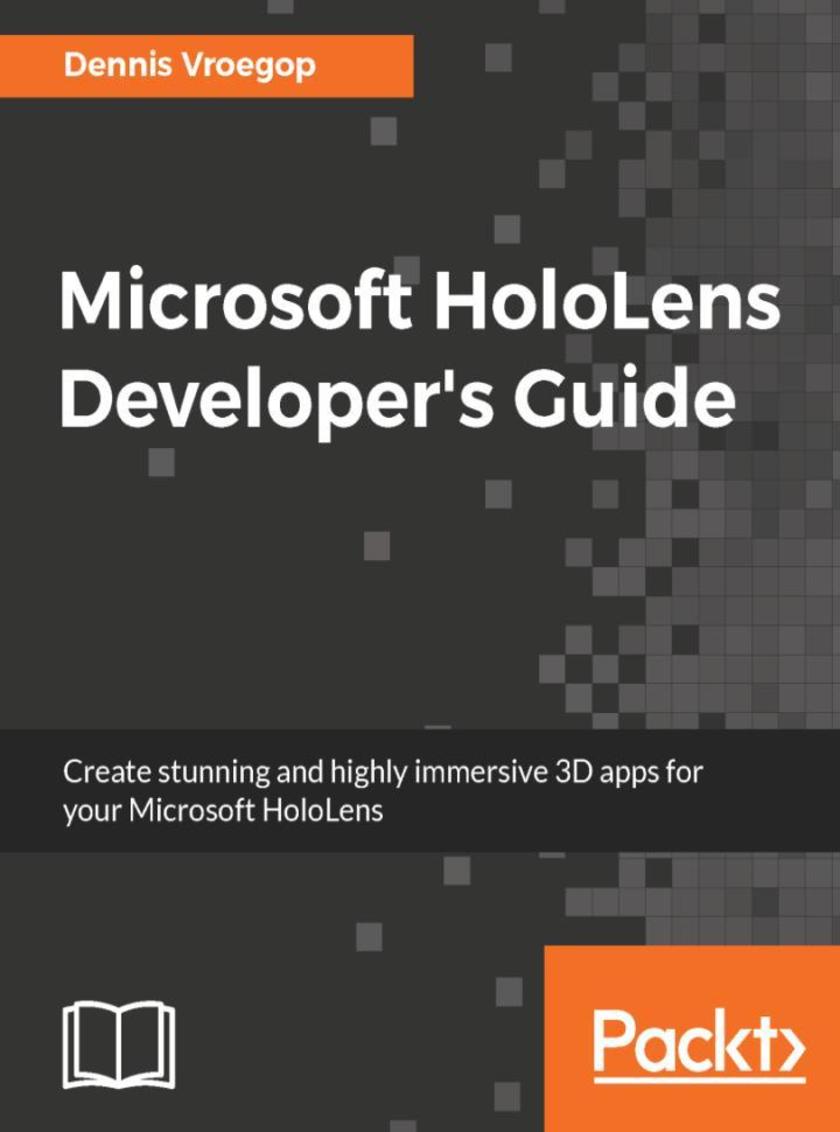
Microsoft HoloLens Developer’s Guide
¥80.65
Transform the ways you communicate, create, collaborate, and explore using Microsoft HoloLens About This Book ? Create immersive augmented reality apps for Microsoft HoloLens from scratch ? Leverage the powerful HoloLens sensors to interact with real-world motions and gestures and make your app life-like ? Explore the powerful Unity 5 SDK along with the Windows Unified platform to get the most out of your HoloLens app Who This Book Is For If you are a developer who wants to create augmented reality apps for the Microsoft HoloLens platform, then this is the book for you. Coding experience with C# is assumed. What You Will Learn ? Design an app for HoloLens that is feasible and attractive to use ? Add gestures and interact with them ? Create sounds in the app and place them in a 3D space ? Use voice generation and voice recognition to make your apps more lifelike ? Interact with the physical environment to place holograms on top of physical objects ? Compare HoloLens with the other products and know how to use its strengths ? Use assets from third parties to enrich our app In Detail HoloLens, Microsoft’s innovative augmented reality headset, overlaps holograms into a user’s vision of their environment. Your ideas are closer to becoming real when you can create and work with holograms in relation to the world around you. If you are dreaming beyond virtual worlds, beyond screens, beyond pixels, and want to take a big leap in the world of augmented reality, then this is the book you want. Starting off with brainstorming and the design process, you will take your first steps in creating your application for HoloLens. You will learn to add gestures and write an app that responds to verbal commands before gradually moving on creating sounds in the app and placing them in a 3D space. You will then communicate between devices in the boundaries of the UWP model. Style and approach This book takes a step-by-step, practical, tutorial-style approach where you will dive deep into HoloLens app development. You will work with the API and write your own complex *s that would interact with the powerful HoloLens sensors and with realistic examples, you will be able to create immersive 3D apps for HoloLens.
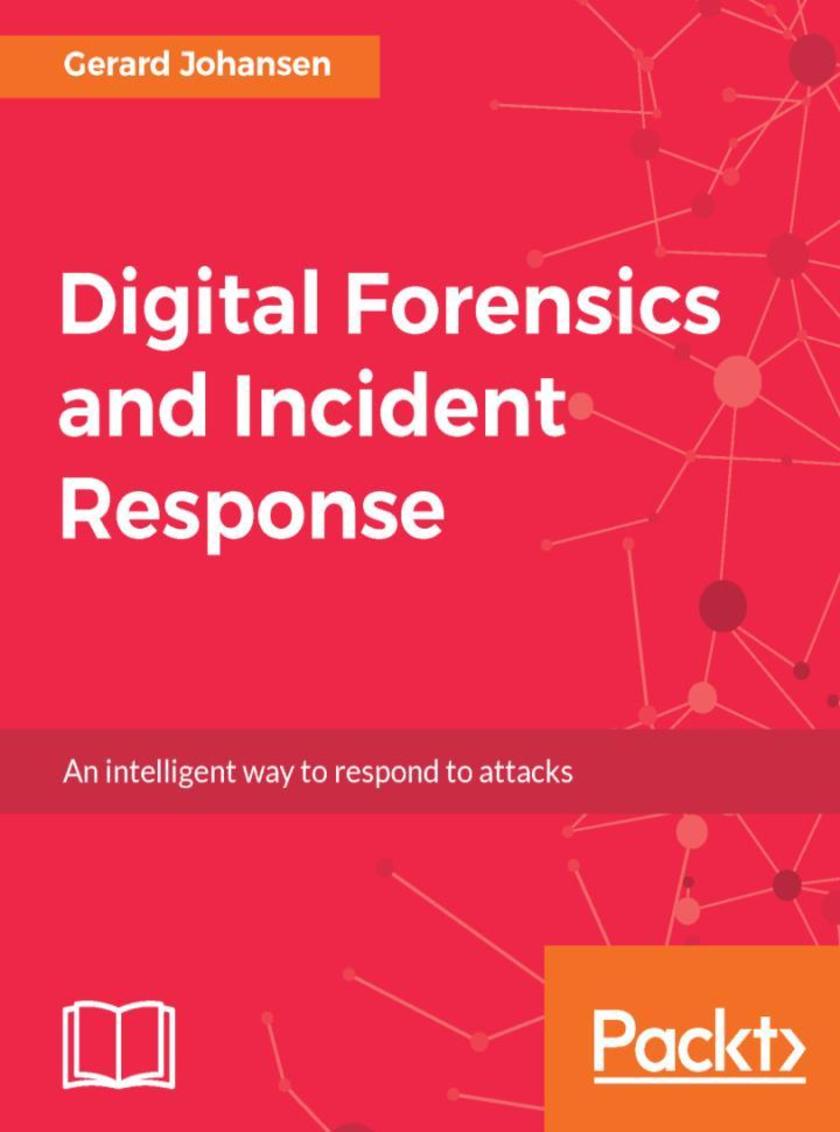
Digital Forensics and Incident Response
¥80.65
A practical guide to deploying digital forensic techniques in response to cyber security incidents About This Book ? Learn incident response fundamentals and create an effective incident response framework ? Master forensics investigation utilizing digital investigative techniques ? Contains real-life scenarios that effectively use threat intelligence and modeling techniques Who This Book Is For This book is targeted at Information Security professionals, forensics practitioners, and students with knowledge and experience in the use of software applications and basic command-line experience. It will also help professionals who are new to the incident response/digital forensics role within their organization. What You Will Learn ? Create and deploy incident response capabilities within your organization ? Build a solid foundation for acquiring and handling suitable evidence for later analysis ? Analyze collected evidence and determine the root cause of a security incident ? Learn to integrate digital forensic techniques and procedures into the overall incident response process ? Integrate threat intelligence in digital evidence analysis ? Prepare written documentation for use internally or with external parties such as regulators or law enforcement agencies In Detail Digital Forensics and Incident Response will guide you through the entire spectrum of tasks associated with incident response, starting with preparatory activities associated with creating an incident response plan and creating a digital forensics capability within your own organization. You will then begin a detailed examination of digital forensic techniques including acquiring evidence, examining volatile memory, hard drive assessment, and network-based evidence. You will also explore the role that threat intelligence plays in the incident response process. Finally, a detailed section on preparing reports will help you prepare a written report for use either internally or in a courtroom. By the end of the book, you will have mastered forensic techniques and incident response and you will have a solid foundation on which to increase your ability to investigate such incidents in your organization. Style and approach The book covers practical scenarios and examples in an enterprise setting to give you an understanding of how digital forensics integrates with the overall response to cyber security incidents. You will also learn the proper use of tools and techniques to investigate common cyber security incidents such as malware infestation, memory analysis, disk analysis, and network analysis.
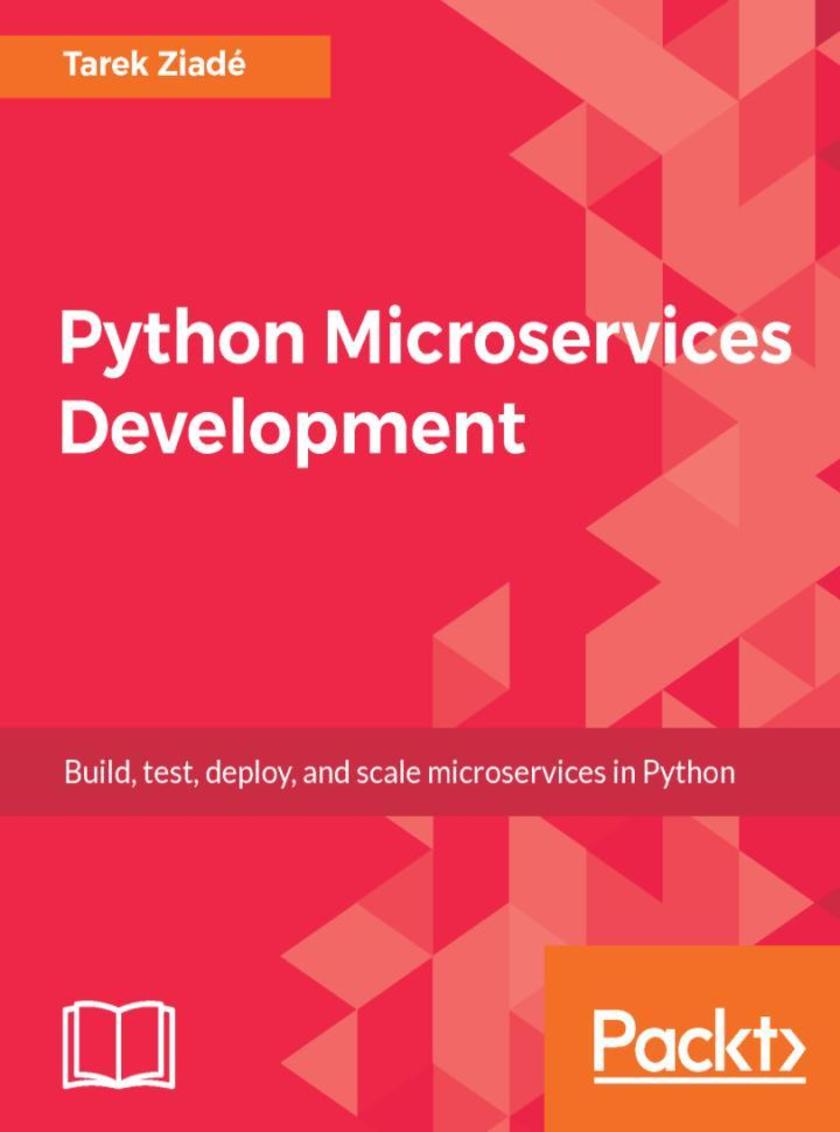
Python Microservices Development
¥80.65
A practical approach to conquering the complexities of Microservices using the Python tooling ecosystem About This Book ? A very useful guide for Python developers who are shifting to the new microservices-based development ? A concise, up-to-date guide to building efficient and lightweight microservices in Python using Flask, Tox, and other tools ? Learn to use Docker containers, CoreOS, and Amazon Web Services to deploy your services Who This Book Is For This book is for developers who have basic knowledge of Python, the command line, and HTTP-based application principles, and those who want to learn how to build, test, scale, and manage Python 3 microservices. No prior experience of writing microservices in Python is assumed. What You Will Learn ? Explore what microservices are and how to design them ? Use Python 3, Flask, Tox, and other tools to build your services using best practices ? Learn how to use a TDD approach ? Discover how to document your microservices ? Configure and package your code in the best way ? Interact with other services ? Secure, monitor, and scale your services ? Deploy your services in Docker containers, CoreOS, and Amazon Web Services In Detail We often deploy our web applications into the cloud, and our code needs to interact with many third-party services. An efficient way to build applications to do this is through microservices architecture. But, in practice, it's hard to get this right due to the complexity of all the pieces interacting with each other. This book will teach you how to overcome these issues and craft applications that are built as small standard units, using all the proven best practices and avoiding the usual traps. It's a practical book: you’ll build everything using Python 3 and its amazing tooling ecosystem. You will understand the principles of TDD and apply them. You will use Flask, Tox, and other tools to build your services using best practices. You will learn how to secure connections between services, and how to * Nginx using Lua to build web application firewall features such as rate limiting. You will also familiarize yourself with Docker’s role in microservices, and use Docker containers, CoreOS, and Amazon Web Services to deploy your services. This book will take you on a journey, ending with the creation of a complete Python application based on microservices. By the end of the book, you will be well versed with the fundamentals of building, designing, testing, and deploying your Python microservices. Style and approach This book is an linear, easy-to-follow guide on how to best design, write, test, and deploy your microservices. It includes real-world examples that will help Python developers create their own Python microservice using the most efficient methods.
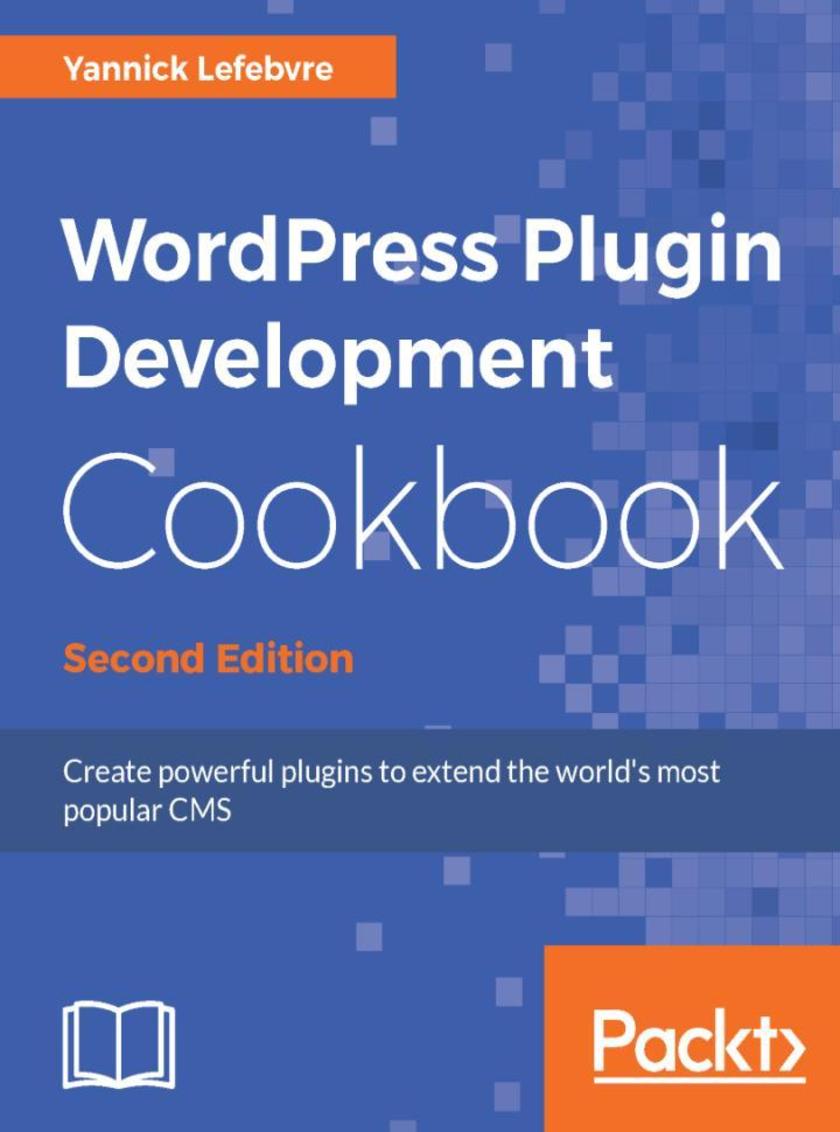
WordPress Plugin Development Cookbook - Second Edition
¥71.93
Learn to create plugins for WordPress 4.x to deliver custom projects or share with the community through detailed step-by-step recipes and code examples About This Book ? Learn how to change and extend WordPress to perform virtually any task ? Explore the plugin API through approachable examples and detailed explanations ? Mold WordPress to your project’s needs or transform it to benefit the entire community Who This Book Is For If you are a WordPress user, developer, or a site integrator with basic knowledge of PHP and an interest to create new plugins to address your personal needs, client needs, or share with the community, then this book is for you. What You Will Learn ? Discover how to register user callbacks with WordPress, forming the basis of plugin creation ? Explore the creation of administration pages and adding new content management sections through custom post types and custom database tables ? Improve your plugins by customizing the post and page editors, categories and user profiles, and creating visitor-facing forms ? Make your pages dynamic using Java*, AJAX and adding new widgets to the platform ? Learn how to add support for plugin translation and distribute your work to the WordPress community In Detail WordPress is a popular, powerful, and open Content Management System. Learning how to extend its capabilities allows you to unleash its full potential, whether you're an administrator trying to find the right extension, a developer with a great idea to enhance the platform for the community, or a website developer working to fulfill a client's needs. This book shows readers how to navigate WordPress' vast set of API functions to create high-quality plugins with easy-to-configure administration interfaces. With new recipes and materials updated for the latest versions of WordPress 4.x, this second edition teaches you how to create plugins of varying complexity ranging from a few lines of code to complex extensions that provide intricate new capabilities. You'll start by using the basic mechanisms provided in WordPress to create plugins and execute custom user code. You will then see how to design administration panels, enhance the post editor with custom fields, store custom data, and modify site behavior based on the value of custom fields. You'll safely incorporate dynamic elements on web pages using *ing languages, and build new widgets that users will be able to add to WordPress sidebars and widget areas. By the end of this book, you will be able to create WordPress plugins to perform any task you can imagine. Style and approach This cookbook will take you through the creation of your first simple plugin to adding entirely new sections and widgets in the administration interface, so you can learn how to change and extend WordPress to perform virtually any task. Each topic is illustrated through realistic examples showing how to solve common problems, followed by detailed explanations of all concepts used
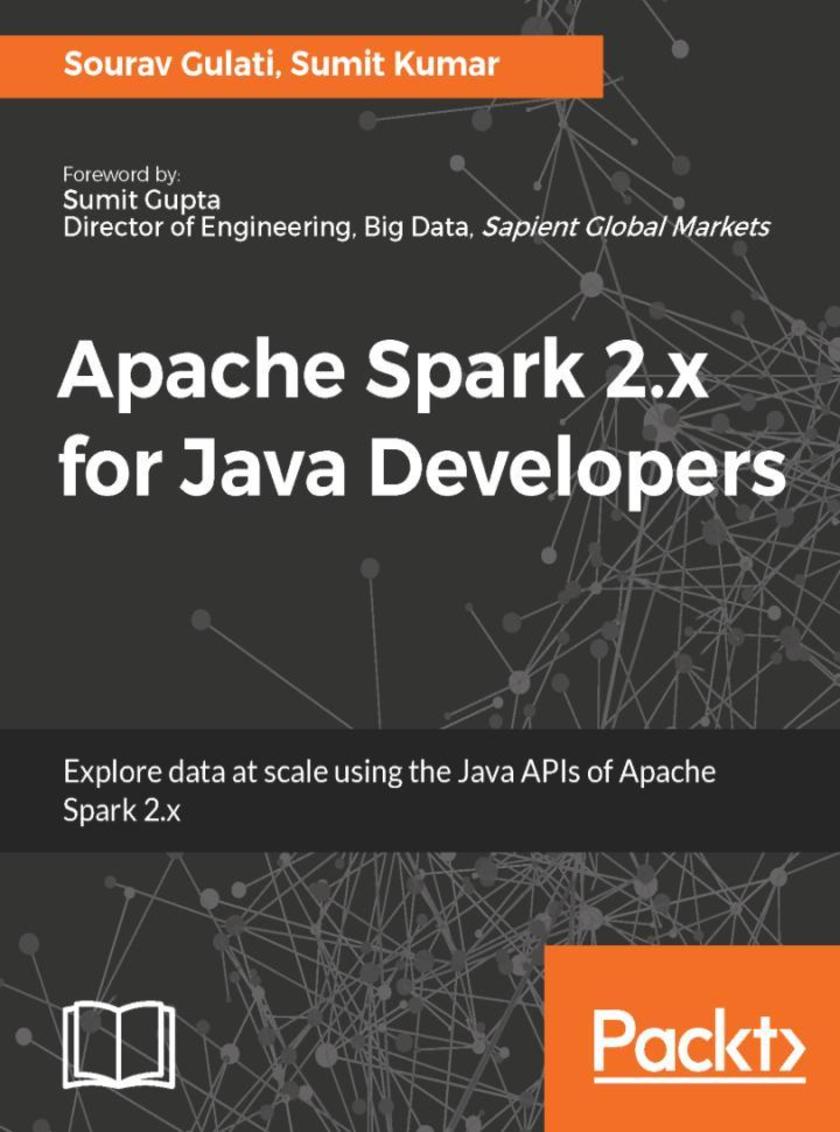
Apache Spark 2.x for Java Developers
¥90.46
Unleash the data processing and analytics capability of Apache Spark with the language of choice: Java About This Book ? Perform big data processing with Spark—without having to learn Scala! ? Use the Spark Java API to implement efficient enterprise-grade applications for data processing and analytics ? Go beyond mainstream data processing by adding querying capability, Machine Learning, and graph processing using Spark Who This Book Is For If you are a Java developer interested in learning to use the popular Apache Spark framework, this book is the resource you need to get started. Apache Spark developers who are looking to build enterprise-grade applications in Java will also find this book very useful. What You Will Learn ? Process data using different file formats such as XML, JSON, CSV, and plain and delimited text, using the Spark core Library. ? Perform analytics on data from various data sources such as Kafka, and Flume using Spark Streaming Library ? Learn SQL schema creation and the analysis of structured data using various SQL functions including Windowing functions in the Spark SQL Library ? Explore Spark Mlib APIs while implementing Machine Learning techniques to solve real-world problems ? Get to know Spark GraphX so you understand various graph-based analytics that can be performed with Spark In Detail Apache Spark is the buzzword in the big data industry right now, especially with the increasing need for real-time streaming and data processing. While Spark is built on Scala, the Spark Java API exposes all the Spark features available in the Scala version for Java developers. This book will show you how you can implement various functionalities of the Apache Spark framework in Java, without stepping out of your comfort zone. The book starts with an introduction to the Apache Spark 2.x ecosystem, followed by explaining how to install and configure Spark, and refreshes the Java concepts that will be useful to you when consuming Apache Spark's APIs. You will explore RDD and its associated common Action and Transformation Java APIs, set up a production-like clustered environment, and work with Spark SQL. Moving on, you will perform near-real-time processing with Spark streaming, Machine Learning analytics with Spark MLlib, and graph processing with GraphX, all using various Java packages. By the end of the book, you will have a solid foundation in implementing components in the Spark framework in Java to build fast, real-time applications. Style and approach This practical guide teaches readers the fundamentals of the Apache Spark framework and how to implement components using the Java language. It is a unique blend of theory and practical examples, and is written in a way that will gradually build your knowledge of Apache Spark.
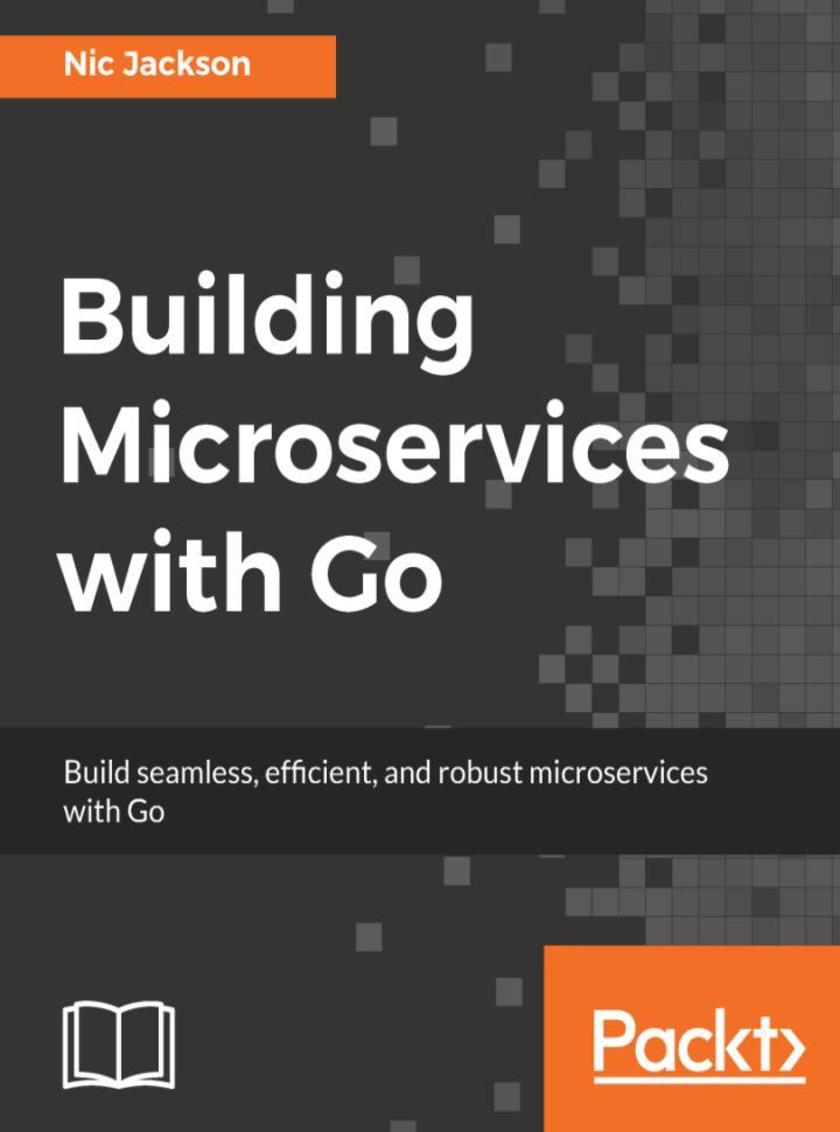
Building Microservices with Go
¥80.65
Your one-stop guide to the common patterns and practices, showing you how to apply these using the Go programming language About This Book ? This short, concise, and practical guide is packed with real-world examples of building microservices with Go ? It is easy to read and will benefit smaller teams who want to extend the functionality of their existing systems ? Using this practical approach will save your money in terms of maintaining a monolithic architecture and demonstrate capabilities in ease of use Who This Book Is For You should have a working knowledge of programming in Go, including writing and compiling basic applications. However, no knowledge of RESTful architecture, microservices, or web services is expected. If you are looking to apply techniques to your own projects, taking your first steps into microservice architecture, this book is for you. What You Will Learn ? Plan a microservice architecture and design a microservice ? Write a microservice with a RESTful API and a database ? Understand the common idioms and common patterns in microservices architecture ? Leverage tools and automation that helps microservices become horizontally scalable ? Get a grounding in containerization with Docker and Docker-Compose, which will greatly accelerate your development lifecycle ? Manage and secure Microservices at scale with monitoring, logging, service discovery, and automation ? Test microservices and integrate API tests in Go In Detail Microservice architecture is sweeping the world as the de facto pattern to build web-based applications. Golang is a language particularly well suited to building them. Its strong community, encouragement of idiomatic style, and statically-linked binary artifacts make integrating it with other technologies and managing microservices at scale consistent and intuitive. This book will teach you the common patterns and practices, showing you how to apply these using the Go programming language. It will teach you the fundamental concepts of architectural design and RESTful communication, and show you patterns that provide manageable code that is supportable in development and at scale in production. We will provide you with examples on how to put these concepts and patterns into practice with Go. Whether you are planning a new application or working in an existing monolith, this book will explain and illustrate with practical examples how teams of all sizes can start solving problems with microservices. It will help you understand Docker and Docker-Compose and how it can be used to isolate microservice dependencies and build environments. We finish off by showing you various techniques to monitor, test, and secure your microservices. By the end, you will know the benefits of system resilience of a microservice and the advantages of Go stack. Style and approach The step-by-step tutorial focuses on building microservices. Each chapter expands upon the previous one, teaching you the main skills and techniques required to be a successful microservice practitioner.
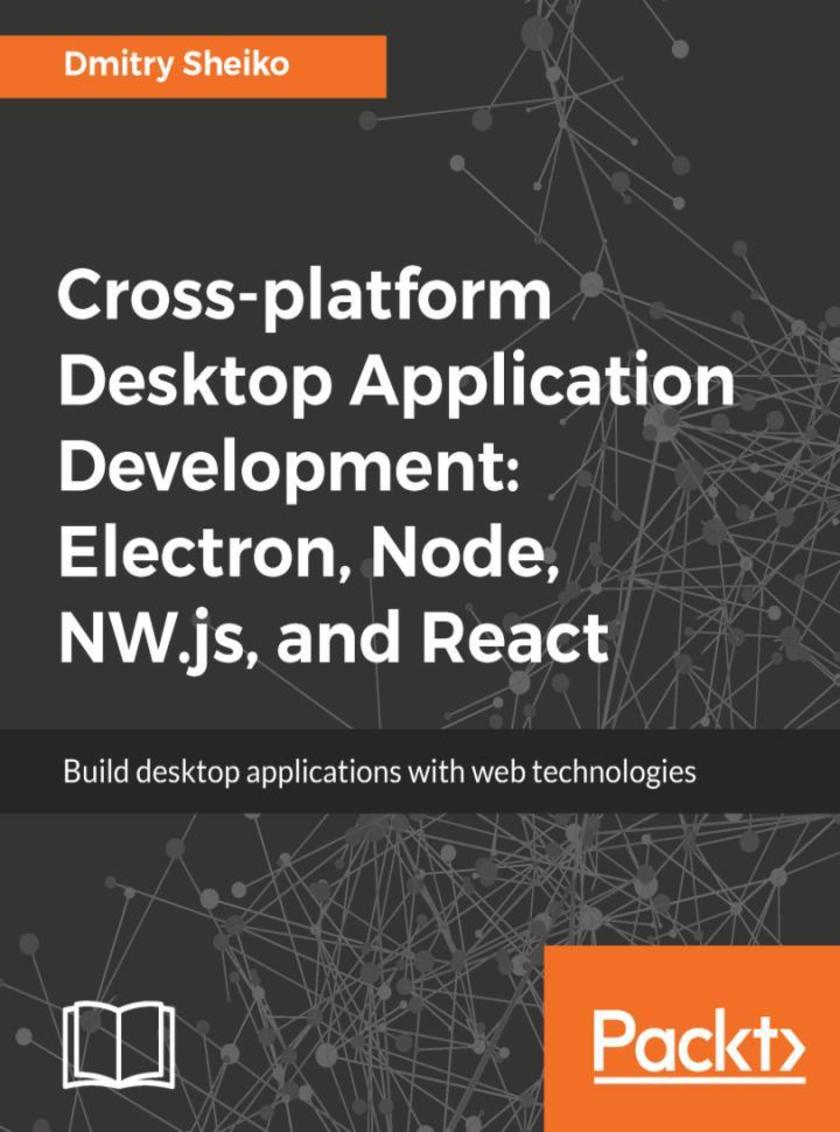
Cross-platform Desktop Application Development: Electron, Node, NW.js, and React
¥80.65
Build powerful cross-platform desktop applications with web technologies such as Node, NW.JS, Electron, and React About This Book ? Build different cross-platform HTML5 desktop applications right from planning, designing, and deployment to enhancement, testing, and delivery ? Forget the pain of cross-platform compatibility and build efficient apps that can be easily deployed on different platforms. ? Build simple to advanced HTML5 desktop apps, by integrating them with other popular frameworks and libraries such as Electron, Node.JS, Nw.js, React, Redux, and TypeScript Who This Book Is For This book has been written for developers interested in creating desktop applications with HTML5. The first part requires essential web-master skills (HTML, CSS, and JavaScript). The second demands minimal experience with React. And finally for the third it would be helpful to have a basic knowledge of React, Redux, and TypeScript. What You Will Learn ? Plan, design, and develop different cross-platform desktop apps ? Application architecture with React and local state ? Application architecture with React and Redux store ? Code design with TypeScript interfaces and specialized types ? CSS and component libraries such as Photonkit, Material UI, and React MDL ? HTML5 APIs such as desktop notifications, WebSockets, WebRTC, and others ? Desktop environment integration APIs of NW.js and Electron ? Package and distribute for NW.JS and Electron In Detail Building and maintaining cross-platform desktop applications with native languages isn’t a trivial task. Since it’s hard to simulate on a foreign platform, packaging and distribution can be quite platform-specific and testing cross-platform apps is pretty complicated.In such scenarios, web technologies such as HTML5 and JavaScript can be your lifesaver. HTML5 desktop applications can be distributed across different platforms (Window, MacOS, and Linux) without any modifications to the code. The book starts with a walk-through on building a simple file explorer from scratch powered by NW.JS. So you will practice the most exciting features of bleeding edge CSS and JavaScript. In addition you will learn to use the desktop environment integration API, source code protection, packaging, and auto-updating with NW.JS. As the second application you will build a chat-system example implemented with Electron and React. While developing the chat app, you will get Photonkit. Next, you will create a screen capturer with NW.JS, React, and Redux. Finally, you will examine an RSS-reader built with TypeScript, React, Redux, and Electron. Generic UI components will be reused from the React MDL library. By the end of the book, you will have built four desktop apps. You will have covered everything from planning, designing, and development to the enhancement, testing, and delivery of these apps. Style and approach Filled with real world examples, this book teaches you to build cross-platform desktop apps right from scratch using a step-by-step approach.




 购物车
购物车 个人中心
个人中心



